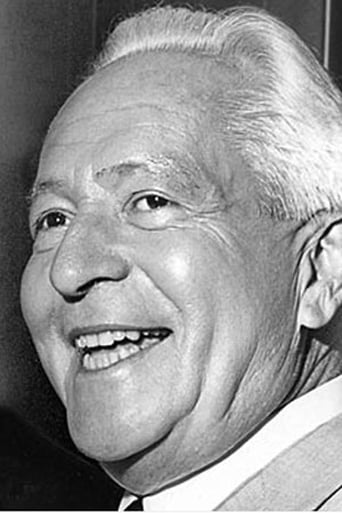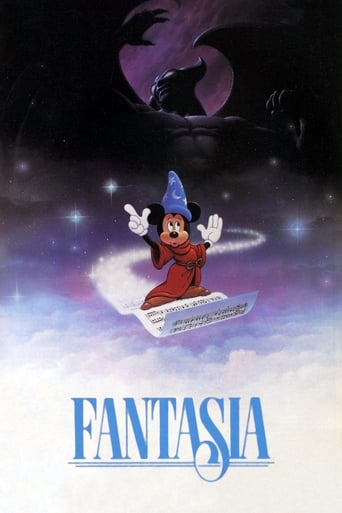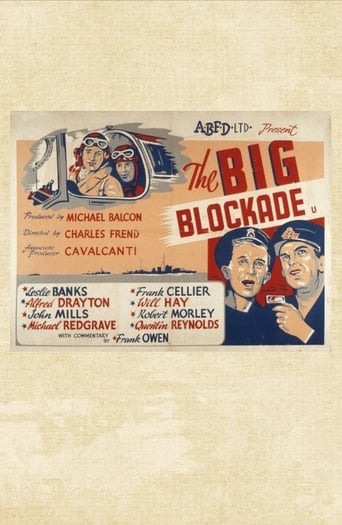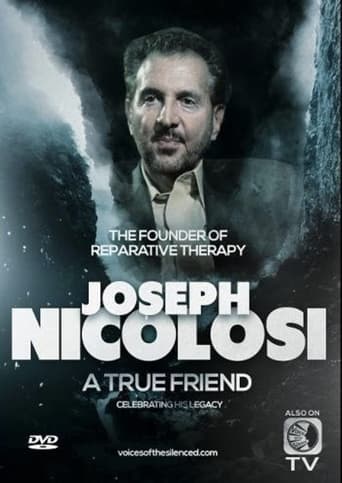
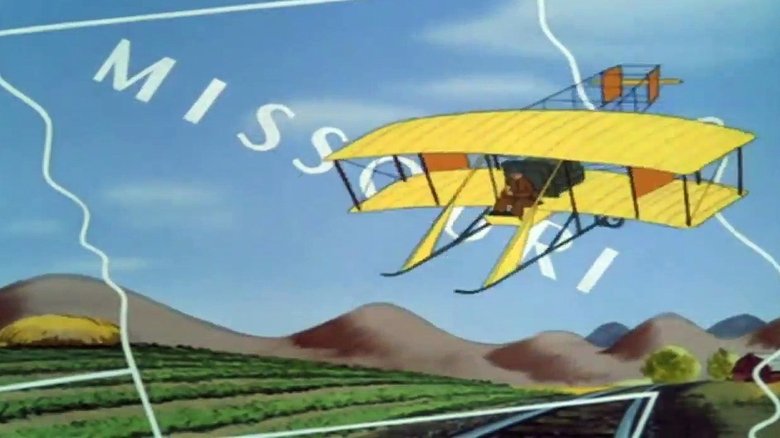
Victory Through Air Power (1943)
This is a unique film in Disney Production's history. This film is essentially a propaganda film selling Major Alexander de Seversky's theories about the practical uses of long range strategic bombing. Using a combination of animation humorously telling about the development of air warfare, the film switches to the Major illustrating his ideas could win the war for the allies.
Watch Trailer
Cast


Similar titles
Reviews
It's funny, it's tense, it features two great performances from two actors and the director expertly creates a web of odd tension where you actually don't know what is happening for the majority of the run time.
Although I seem to have had higher expectations than I thought, the movie is super entertaining.
Very good movie overall, highly recommended. Most of the negative reviews don't have any merit and are all pollitically based. Give this movie a chance at least, and it might give you a different perspective.
It is neither dumb nor smart enough to be fun, and spends way too much time with its boring human characters.
It's hard to endorse a film about a war involving such blood, sacrifice, and hatred when it comes to us in the form of a cartoon. Elmer Fudd is the proper subject of a cartoon, and Mickey Mouse, and The Flintstones.Yet this is probably the most famous cartoon to come out of World War II, made by the Disney people in a style, about a subject, far different from "Snow White and the Seven Dwarfs." There is no newsreel footage at all, and virtually no still photographs. The whole thing is a cartoon. And the cartoons are both informative and reasonably accurate. A Stuka looks like a Stuka, not like a generic "airplane." Even a lesser known airplane like the Japanese G-4 "Betty" looks like what it's supposed to be.And our chief source of information, aside from Art Baker's narration, is Alexander P. de Seversky, aviation expert, industrialist, and military strategist. It was his company, Republic, that gave us the P-47 Thunderolt.Here, the live interludes, are lectures from Seversky outlining his thesis in his Russian accent, which goes something like, "Trow avay da bettleships and built airoplens instead." He doesn't argue that air power is an important means of winning the war. To him, it seems to be the ONLY way. His presentation is very simple and clear but in case you don't get his point, the cartoons spell it out for you in lurid color. A chimpanzee would get it.Of course this was released in 1943, a year during which the major turning points of the war began -- new Allied anti-submarine defenses, Stalingrad, the fall of Italy, and a tremendous outpouring of American military equipment. Seversky's logic points up the importance of air power but, without a crystal ball and without access to classified information, he made claims that weren't true.Just a few examples, because he doesn't make that many mistakes. The British and French troops weren't successfully evacuated from Dunkirk because the RAF ruled the skies. The Nazis weren't building ever bigger and more potent submarines. The RAF and USAAF attacks on factories were good at tearing up cities but not at destroying the ability to produce weapons or at breaking the will of the victims. He proudly describes the terrific hammering of a city like Köln without mentioning that our own losses in attacks like these were so appalling that they needed to be temporarily suspended. The guy is full of belief and passion, though, so much so that one wouldn't want to argue with him.He's certainly right about one thing. The longer your supply lines, the less secure your position. It was illustrated in the battles between Rommel and the British in North Africa. Each army would drive the other back until its supplies were unsteady, then they in turn would be driven back to their source. In 1943, Japan's empire covered a vast amount of territory. Seversky examines each possible approach to reaching Japan and rules all of them out. Island hopping? Nope. Too many islands to conquer one by one. Meanwhile Japan would be siphoning off the necessary materials of war from its own conquered territory.But it was that approach that we finally used successfully, once we realized that we could skip many of the stronghold and leave them to "wither on the vine." The two B-29s that dropped the big ones and ended the war took off from Tinian Island, one of the Ryuku chain, that we had reached by island hopping. And the Japanese never did continue siphoning off enough war materials because our own submarines (that is, the USN, not the USAAF) made the sea routs impassable to shipping.I don't mean to be too harsh on Seversky. It's certainly no fault of his that he didn't predict thermonuclear bombs and jet engines. Perhaps his presentation was flawed but his reasoning sound. In 1943, even if you knew about our losses over France, Germany, and Romania, would it have been wise to publicize them? The film is almost like a peek into the past and almost renders our current problems minuscule.
whoa. animated explosions. cool. i only gave this film a nine because i hate war. but the animation is way cool.this film is filled with one explosion after another. it becomes almost numbing watching submarine torpedoes slam into battleships and blow up. my favorite scene was the one that had the aircraft carrier being assaulted from above.militarily this film seems like common sense military strategy. it's pretty much explained in layman terms through the magic of Disney cartoon storytelling.the best sequences by far are the ones that take you through aviation history. the animation is terrific.it's a strange film though, and it gives a eerie feeling like you are seeing top secret information or something.mostly i found this film kind of funny because it was so noisy and hawkish. normally i find Disney good natured family fare, this film makes you wonder about the mind of the man.this film is testosteroned and noisy and fanatical about war. makes it even more funny.the military industrial complex is by no means cause for amusement. unless it's done by Disney.
Disney like most other Americans in the early 1940s wanted to find some way to contribute to the war effort short of actually fighting. This film - along with the other wartime shorts on the DVD that contains it - stems from that impulse.On one level, the film is meant to educate general audience in the scenarios of the history of flight, aerial combat and the (then) global crisis regarding the Allies vs. the Axis powers.It does its job, entertaining when possible, affirming destruction and American/Allied dominance at critical points.During my most recent viewing of it, I found that it almost seemed to make the case for nuclear warfare. Not outright, mind you, but through its continued emphasis of how Allied airstrikes, because of their remote points of origin, can/could not possibly inflict enough damage to Axis supply lines to shut them down. The film and its military authority Major Seversky propose that long range bombers are the answer - after which a presumably innovative animated version of just such a long range bomber is shown on screen: its long, clumsy-looking, with several large gunwales pointing out all over the plane's body. After seeing that, i could only surmise that military officials of the 1940s saw the folly in trying to build bigger and better airships to do in the Axis. Instead, per the film's rhetoric, the more logical solution seems/seemed to be: "Forget about trying to send a volley of superplanes; instead, send only one plane - but design its cargo to deliver Armageddon!"
I just watched this feature last night from my copy of "Disney Treasures: On the Front Lines," which is an excellent set with many cartoon shorts, educational films, and propaganda films that are unusual of Disney, but nonetheless retain the same feel as the ordinary Disney short. Being a pacifist, I think that all people should try to understand warfare for what it is, but try to avoid jumping into war until it is absolutely necessary. WWII was indeed a necessary war to fight, and the film, though not specifically aimed to do so, makes this point very clear. First, before getting directly into the battles, the film educates us on the history of flight. With cartoon humour and sight gags it comes off very entertaining. Then, the film is turned over to Alexander de Seversky, author of the book on which the film is based. De Seversky makes a valid point that the war should be fought with an enlarged military air force as opposed to naval and land based tactics. He is made to be very informative and enjoyable to watch against the animated maps and diagrams created by Disney's finest animators.Eerily, there is a link to the 9/11 happening in the idea de Seversky expresses that air power removes the lines between civilians and soldiers and puts the lives of any of us at risk. It is fortunate that he had not lived to see this sad day.


